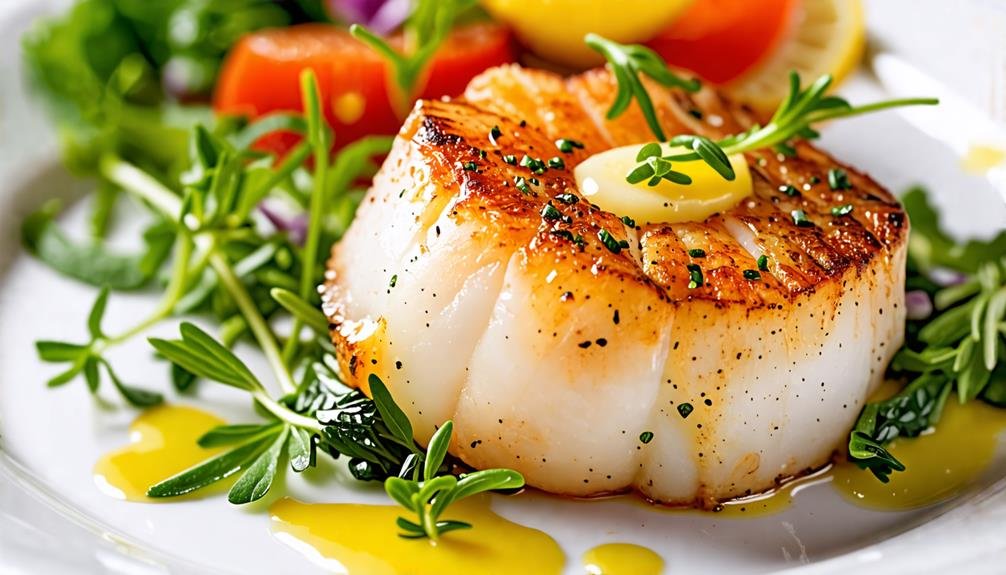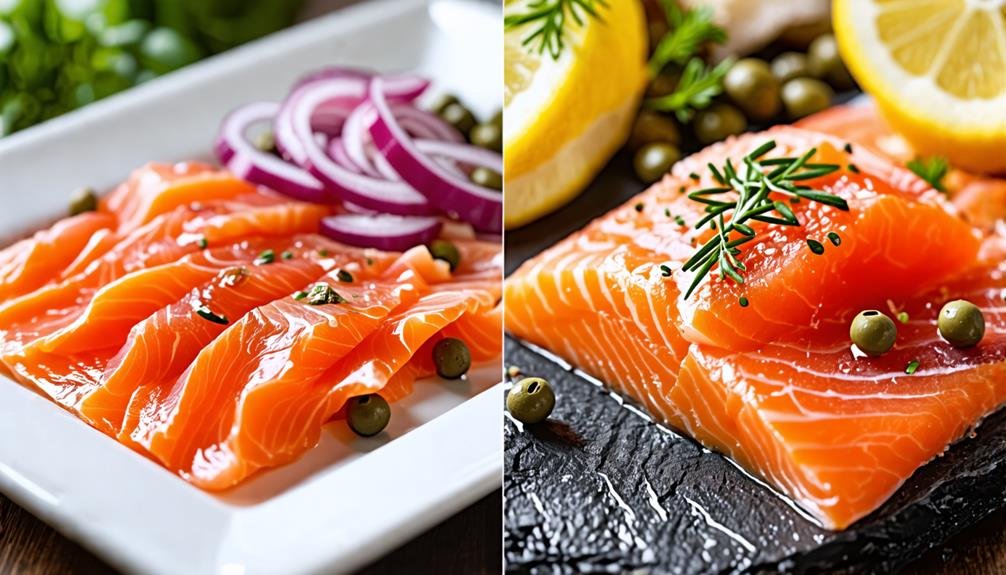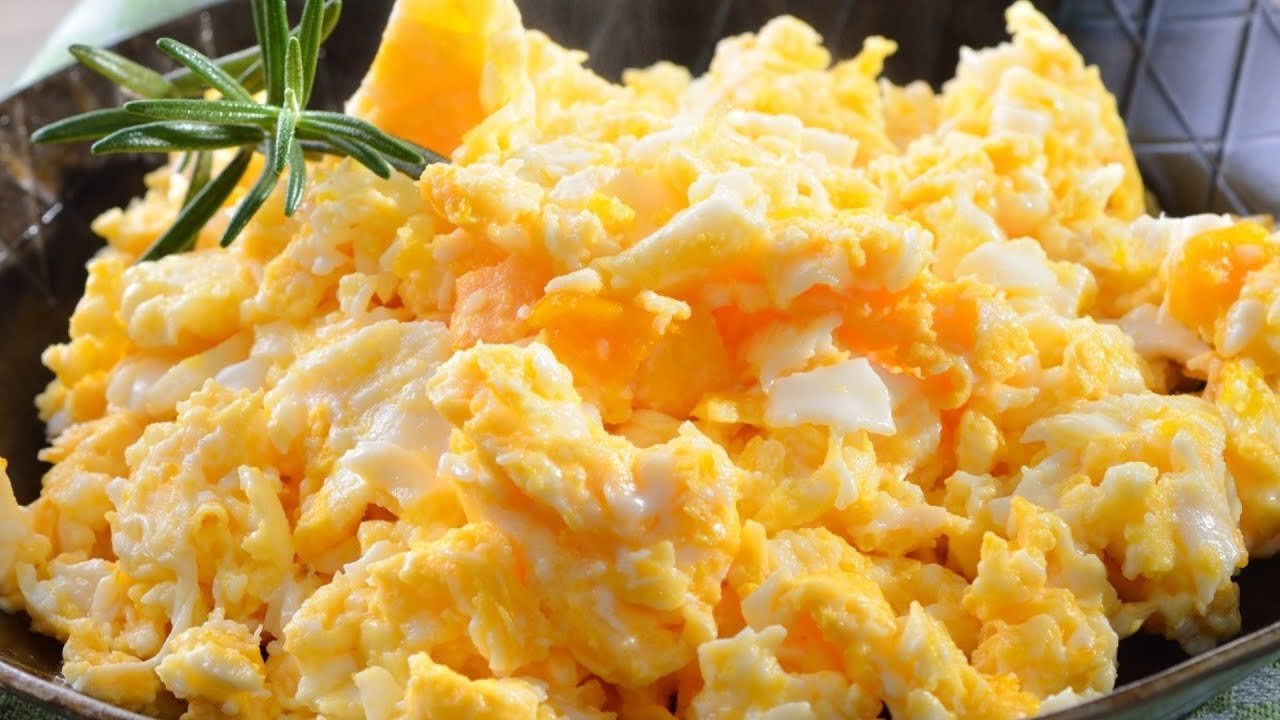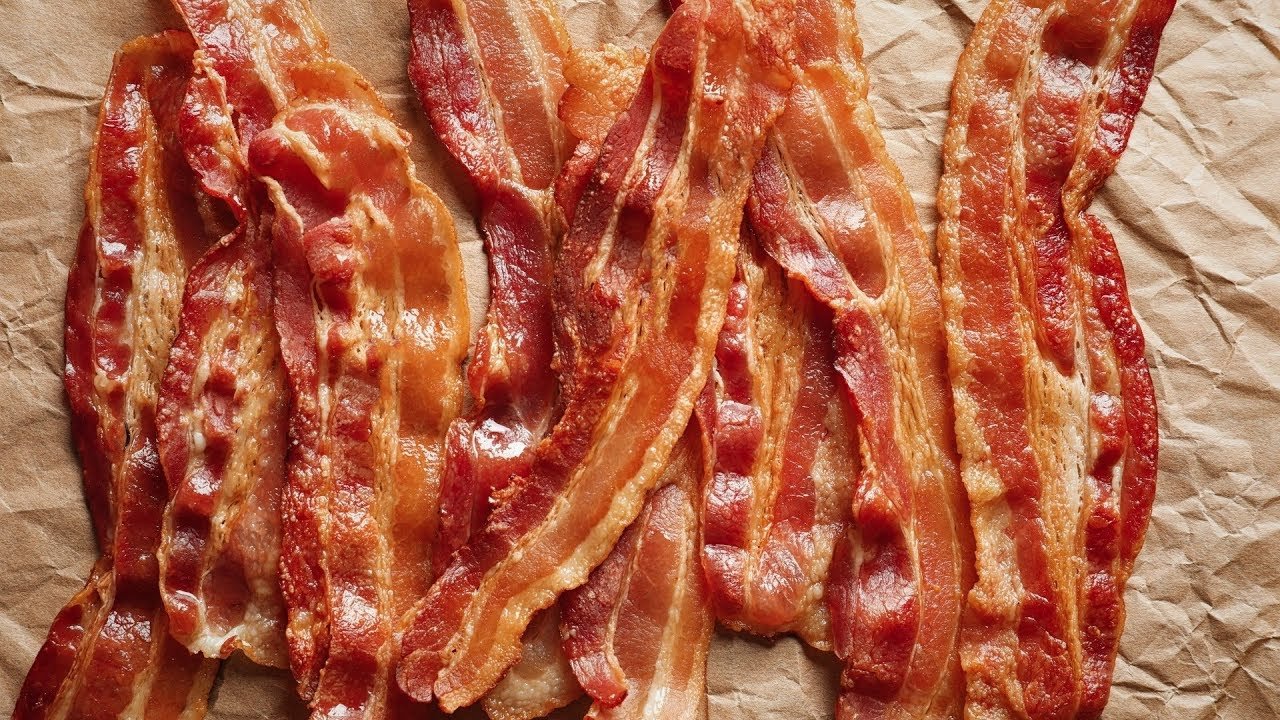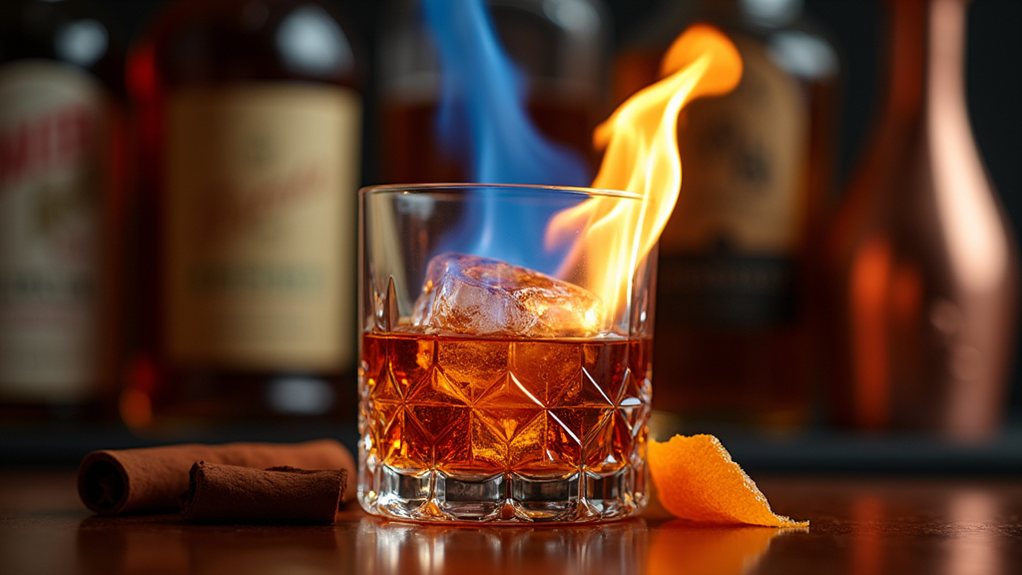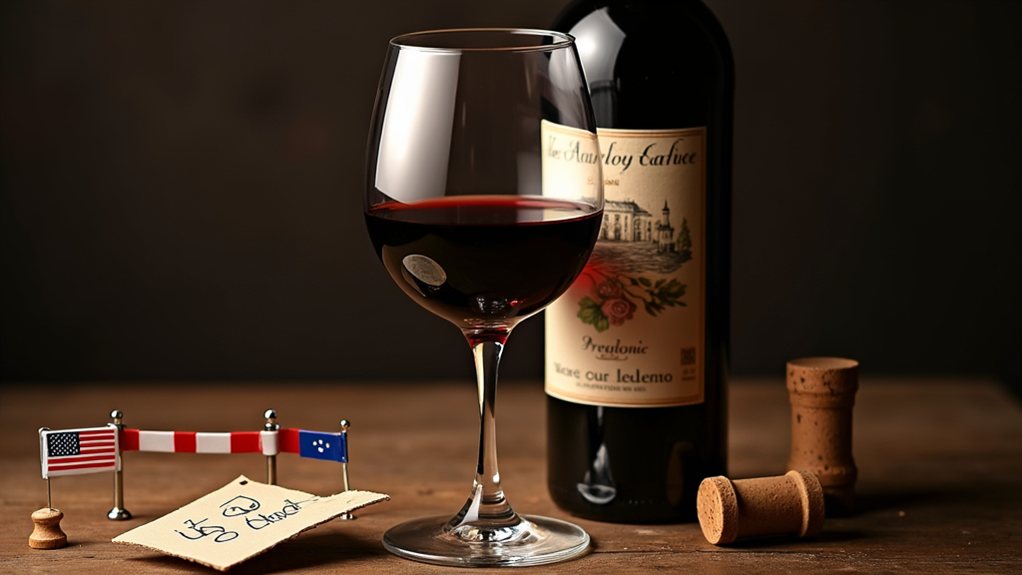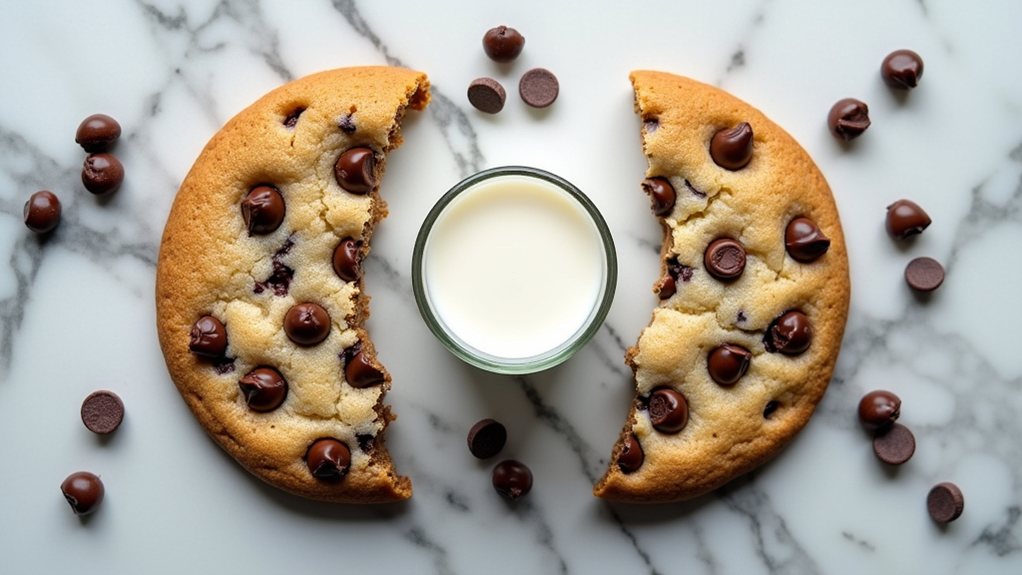One simple error that leads to chewy scallops is forgetting to remove the side muscle before cooking. This small, tough piece can greatly impact the overall texture and tenderness of the scallop. For best results, grasp the side muscle and pull it away from the scallop gently. Moreover, proper drying is crucial; wet scallops steam instead of searing, resulting in a less desirable texture. Cooking them quickly over high heat, typically no more than 2-3 minutes, also helps maintain their tender consistency. Mastering these techniques can improve your scallop dishes, revealing further insights into perfect preparation.
Choosing Quality Scallops
To choose quality scallops, look for fresh, opaque white scallops that are uniform in size. Fresh scallops should feel moist and emit a light ocean scent, with no unpleasant fishy odors. Discard any scallops that appear discolored or slimy, as these are signs of poor quality.
Sea scallops, known for their bold flavor, are typically more sought after than bay scallops, which have a sweeter taste. Ensure the scallops you select are free from torn edges or any visible damage. Opt for dry-packed scallops, such as those from trusted brands like Ocean Beauty Seafood, as they tend to offer a better texture and flavor compared to wet-packed options.
When cooking scallops, remember that less is more. Sear them for just one to two minutes per side to preserve their tender and juicy quality. By following these tips, you can avoid chewy scallops and truly enjoy the delicate nature of this exquisite seafood.
Recognizing the Side Muscle
To identify the side muscle on scallops and ensure a tender culinary experience, look for a thin, translucent strip on the scallop's side. This small, rectangular muscle, known as the side muscle, is crucial to remove for optimal texture. It's tougher than the tender meat, affecting the overall quality of your dish.
Start by inspecting the scallop closely. The side muscle will be attached to the main body. Gently pinch it with your fingers and pull it away. This quick removal can elevate your scallop dish, enhancing its tenderness and preventing any chewiness. Enjoy a delightful seafood experience with perfectly prepared scallops!
Importance of Drying Scallops

Drying scallops is crucial for achieving a perfect sear and enhancing their flavor. Wet scallops steam during cooking, which prevents caramelization. This affects both texture and taste.
To dry scallops, gently pat them with paper towels. For even better results, place them on a wire rack to allow any remaining moisture to evaporate. This ensures uniform cooking and a beautifully browned exterior, adding depth to your dish.
Dry-packed scallops, like those from Brand X, lack preservatives and generally yield better results than wet-packed options. Wet-packed scallops often contain excess liquid, compromising the cooking process. By focusing on drying, you create a foundation for a culinary masterpiece. Properly dried scallops maintain a tender texture and deliver a rich flavor that elevates any dish. In summary, drying scallops is an essential step that should not be overlooked.
Cooking Temperature and Time
To achieve the perfect cooking temperature and time, it is essential for cooking scallops to ensure they remain tender and not overcooked. Scallops are delicate seafood that cook quickly, typically needing just two to three minutes over high heat. Begin by preheating a stainless steel or cast iron skillet until it reaches a temperature of about 450°F (232°C) to create a sear that enhances flavor and texture.
When you place the scallops in the hot pan, they should sizzle immediately, confirming they're cooking properly. Sear the scallops for approximately one minute on each side, turning them only once to develop a beautiful golden crust. Be cautious, as overcooking can result in a rubbery texture. A perfectly cooked scallop will appear opaque in the center and feel slightly firm to the touch.
If you prefer other cooking techniques, such as poaching or grilling, keep in mind that these methods will require different time adjustments. For example, poaching may take around three to five minutes, depending on the scallop's thickness. Ultimately, mastering the cooking temperature and time is fundamental for enjoying scallops at their finest.
Seasoning for Flavor Enhancement
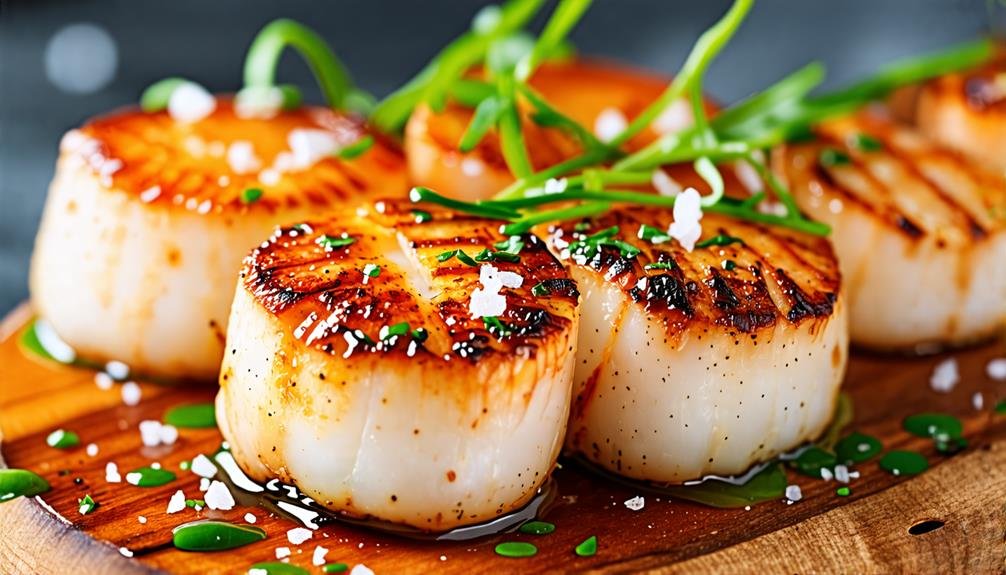
Seasoning enhances the flavor of scallops. Start with coarse sea salt and freshly ground black pepper. This basic seasoning highlights the sweetness of scallops.
Next, add complementary elements. Fresh lemon juice brightens the dish. Garlic or shallots introduce depth. Fresh herbs like parsley or chives provide a fresh counterbalance to the scallops' richness. For a unique twist, use high-quality infused oils such as chili oil or truffle oil.
Timing matters; season scallops just before cooking. This keeps the flavors vibrant. Use light seasoning to maintain the delicate taste and texture. Thoughtful seasoning transforms scallops into a memorable dish, elevating them to a high culinary level.
Exploring Cooking Methods
Scallops can be prepared using various cooking techniques that enhance their flavors and textures. Searing creates a caramelized crust and keeps the inside tender. Ensure the scallops are dry and pan-sear them in a hot skillet for about one minute on each side.
Poaching gently cooks scallops in a flavorful broth, resulting in a silky texture that highlights their natural sweetness. This method is ideal for those seeking a lighter dish.
Baking allows scallops to cook evenly while absorbing flavors from other ingredients. Grilling adds a smoky flavor, providing a charred contrast to their sweet taste.
Some may prefer raw scallops in sushi or sashimi, showcasing their fresh flavor and delicate texture. Each cooking method reveals the culinary potential of scallops, ensuring they remain tender and enjoyable.
Pairing Scallops With Other Dishes

Pairing scallops with compatible side dishes can enrich their delicate flavor and texture. Consider serving them alongside pasta, rice, or vegetables that offer a savory contrast while allowing the scallops to shine. Moreover, choosing the right sauces and wine can enhance the dining experience, making it vital to investigate different flavorful combinations that harmonize with these exquisite seafood gems.
Best Side Dishes
To elevate the flavor of scallops, pair them with side dishes that complement their taste and texture. A refreshing citrus salad with arugula and grapefruit enhances the dish's brightness while balancing the scallops' sweetness. Creamy Arborio risotto, infused with fresh herbs, offers a rich contrast and enriches the dining experience.
For a heartier choice, roasted vegetables like asparagus or Brussels sprouts provide a satisfying crunch and earthy notes that work well with scallops. Garlic-infused mashed potatoes or those drizzled with truffle oil create a luxurious base that highlights the scallops.
Another excellent side is quinoa pilaf, which contributes a nutty flavor and pleasing texture. For added sophistication, incorporate sautéed shiitake mushrooms or a seasonal vegetable medley, enhancing both the visual appeal and flavor complexity of the dish. The success of a scallop meal hinges on selecting sides that harmonize with their delicate profile, ensuring a memorable culinary experience.
Flavorful Sauce Combinations
Scallops shine when paired with flavorful sauces. The right sauce enhances their delicate flavor and complements various dishes. Here are some mouthwatering combinations:
- Citrus Beurre Blanc: This timeless sauce combines butter, white wine, and citrus juice, imparting a zesty brightness that highlights the scallops' inherent sweetness.
- Garlic Herb Butter: A delightful blend of melted butter, fresh herbs, and minced garlic envelops scallops in a comforting, aromatic embrace.
- Balsamic Reduction: A drizzle of balsamic reduction over seared scallops introduces a delightful tangy sweetness that harmonizes with their savory profile.
These sauces not only elevate the scallops but also pair wonderfully with sides like Arborio rice or sautéed greens. The ideal sauce enhances flavor and allows your dish to flourish, encouraging culinary exploration. Experimenting with different sauce combinations can lead to delightful discoveries, transforming your scallop dishes into a true celebration of flavor.
Wine Pairing Suggestions
Pairing wine with scallops enhances the dining experience. Crisp white wines, like Kim Crawford Sauvignon Blanc or Santa Margherita Pinot Grigio, complement the delicate flavors of scallops. Their acidity balances the sweetness of the seafood.
For richer dishes, such as scallops in creamy sauces, a buttery Chardonnay, like Rombauer Vineyards Chardonnay, creates a luxurious pairing. If red wine is preferred, a light-bodied Pinot Noir, such as Meiomi Pinot Noir, offers subtle earthiness that works well with savory ingredients like pancetta or shiitake mushrooms.
When enjoying scallops on a seafood platter, a sparkling wine like Moët & Chandon Champagne or La Marca Prosecco invigorates the palate with its effervescence. Ultimately, the right wine elevates the dish, creating a harmonious and enjoyable experience.
Common Mistakes to Avoid
To achieve perfectly tender scallops, it is important to avoid common mistakes that can lead to a chewy texture. One significant error is neglecting to remove the side muscle, which can adversely affect the dish's complete quality. Moreover, overcooking scallops can result in a tough consistency, making it vital to monitor cooking times closely for the best results.
Ignoring Side Muscle Removal
Removing the side muscle from scallops is essential for achieving a delightful dining experience. This small muscle, located along the scallop's edge, can create a tough and chewy texture if left intact. Here are three compelling reasons to prioritize this step:
- Enhanced Tenderness: Without the side muscle, scallops become more tender, providing a buttery mouthfeel that elevates your dish.
- Richer Flavor: Properly prepared scallops can better absorb seasonings, resulting in a more pronounced flavor that boosts your culinary creation.
- Consistent Quality: Ensuring every scallop has the same texture leads to a harmonious dining experience, making your meal more enjoyable.
To remove the side muscle, simply grasp it between your fingers and gently pull it away from the scallop. You can discard it or incorporate it into a seafood broth for added flavor. This small step not only highlights your cooking skills but significantly improves the quality of your scallop dish.
Overcooking Scallops
Overcooking scallops leads to a tough texture. Scallops, a delicate seafood, require precise cooking to stay tender. They typically cook quickly in a hot skillet, needing only one to two minutes per side. If cooked too long, they lose moisture and become chewy, ruining their delightful taste.
To prevent overcooking, closely watch the cooking process. When the scallops are golden brown and slightly opaque in the center, they are ready. Using a timer can help track cooking duration. Additionally, different cooking methods, like poaching or grilling, may need varied timing and attention compared to searing.
Final Tips for Perfect Scallops
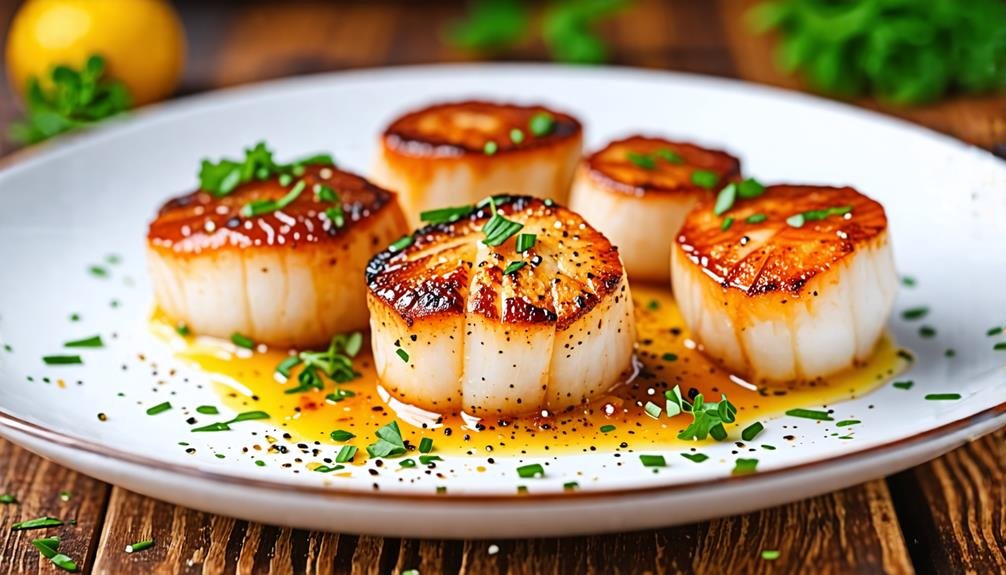
To achieve perfect scallops, focus on key aspects: selection, preparation, and cooking techniques. Follow these essential tips for a delightful dish:
- Choose High-Quality Scallops: Select fresh sea scallops that are opaque white and consistently sized. Avoid scallops with torn edges for the best flavor and texture, ensuring a satisfying dining experience.
- Remove the Side Muscle: For optimal tenderness, take off the small, fibrous side muscle. This step enhances the scallops' texture, preventing any chewiness in your dish.
- Perfect Your Cooking Methods: Scallops cook rapidly, usually needing just one minute per side in a hot skillet. Be cautious not to overcook them, as this compromises their delicate nature. Try various cooking methods, such as poaching, grilling, or baking, to discover your favorite technique.
